Guan Wei – from Beijing to Sydney and back to Beijing
Sasha Grishin
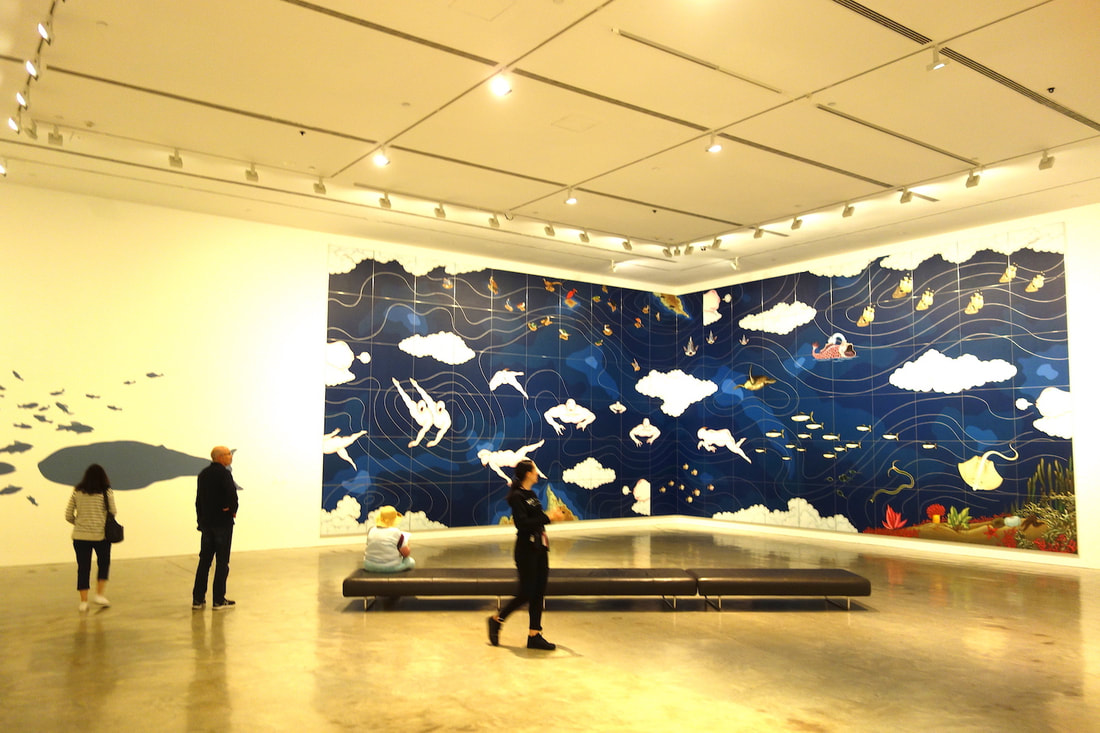
Guan Wei, exhibition at the MCA 2019, general installation view, photograph S Grishin
The affable Guan Wei has been a fixture in the Sydney art scene for a quarter of a century. Although he belongs to the same generation of artists who fled China in the wake of the Tiananmen Square massacre of 1989, Guan Wei had come to Australia months earlier for a residency at the Tasmanian School of Art. When he popped back to China and saw what was happening, he returned to Tasmania and then gravitated to Sydney where he took up permanent residency in 1990.
With a smile one could say that he also took up ‘permanent residency’ at Sydney’s Museum of Contemporary Art (MCA) – becoming their first artist-in-residence for a year in 1992. Later, in 1999, he was the first artist to be granted a solo exhibition at the MCA and now, twenty years later, as far as I am aware, he is the first and only artist to hold two solo shows at this young and prestigious institution at Circular Quay. He was also the first, or one of the first artists commissioned to execute a giant mural for the new foyer of the MCA when it opened after its renovations with a sprawling frieze-like composition that made poignant comments on Australia’s attitudes to the ’boat people’, to climate change and global pollution.
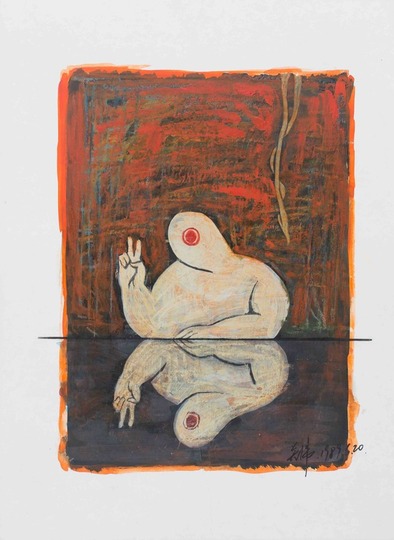
Guan Wei, Two-finger exercise no.5, 1989, Museum of Contemporary Art, purchased 1992, image courtesy and © the artist, photograph: Jessica Maurer
Now aged sixty-two, Guan Wei divides his time between Beijing (where since 2008 he spends much of his time in a large studio making huge paintings and sculptures) and Sydney (where he maintains a modest studio in Newtown). He produces work at a prodigious rate with over sixty solo exhibitions to his credit all around the globe and dozens of commissions.
Guan Wei has developed a hybrid mode of thinking and method of work that reflects both traditional Chinese as well as Western European visual systems. In his art, since the 1990s he has devised a peculiar blend of Surrealism with a distinctly Chinese sensibility. In Chinese art, as far as I can gauge, there is nothing quite like it, whereas his work has taken the Sydney art scene by storm and his witty visual commentaries on the antipodean lifestyle have won instant acceptance.
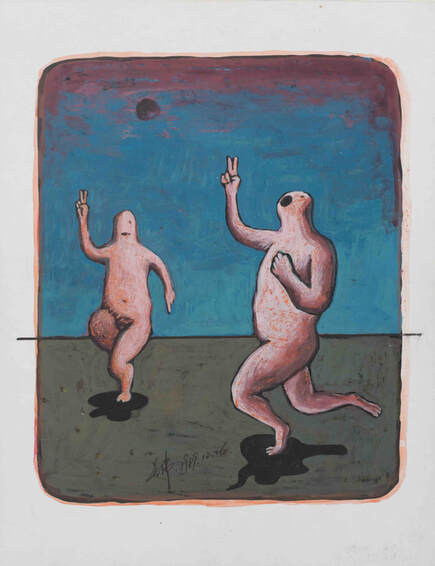
Guan Wei, Two-finger exercise no.48, 1989, Museum of Contemporary Art, gift of the artist, 1993, image courtesy and © the artist, photograph: Jessica Maurer
Storytelling, mythology and the migrant experience all interweave in his art into a light-hearted visual narrative, which frequently contains a political sting in its tail. His is predominantly a linear style, where humanoid forms are outlined against relatively flat background masses. Apart from distortions in the articulation of his figures, Guan Wei also engages with the Surrealist strategies in games with perspective and scale, for example, huge birds descend on landscape masses, which cartographically resemble continents.
The exhibition at the MCA brings together several bodies of work all in the collection of the MCA. Two-finger exercise (1989) was made in Beijing and consists of forty-eight small gouache paintings, poems and collages made from black-and-white photographs and Chinese envelopes. In the paintings, his humanoid figures have only a single eye or a gaping mouth and hold two fingers up in the air as a victory salute that he witnessed all over the city that year.

Guan Wei, Feng Shui, 2004, acrylic on composite board. Museum of Contemporary Art, donated through the Australian Government’s Cultural Gifts Program by Cromwell Diversified Property Trust, 2017. Image courtesy and © the artist
Feng Shui (2004) is a huge mural, comprising 120 individual panels, that explores the idea of harmony amongst all living beings and elements co-existing with the planet earth. The term sometimes rendered in English as ‘geomancy’ is an ancient Chinese philosophy where energy fields are brought into harmony with the environment. In a curious way, there are echoes with the small gouaches on the adjoining wall. There are nine swimming figures, ten floating white clouds, a fecundity of birds and marine life and the four winds of the four ‘corners of the world’ bring life to the ocean currents.
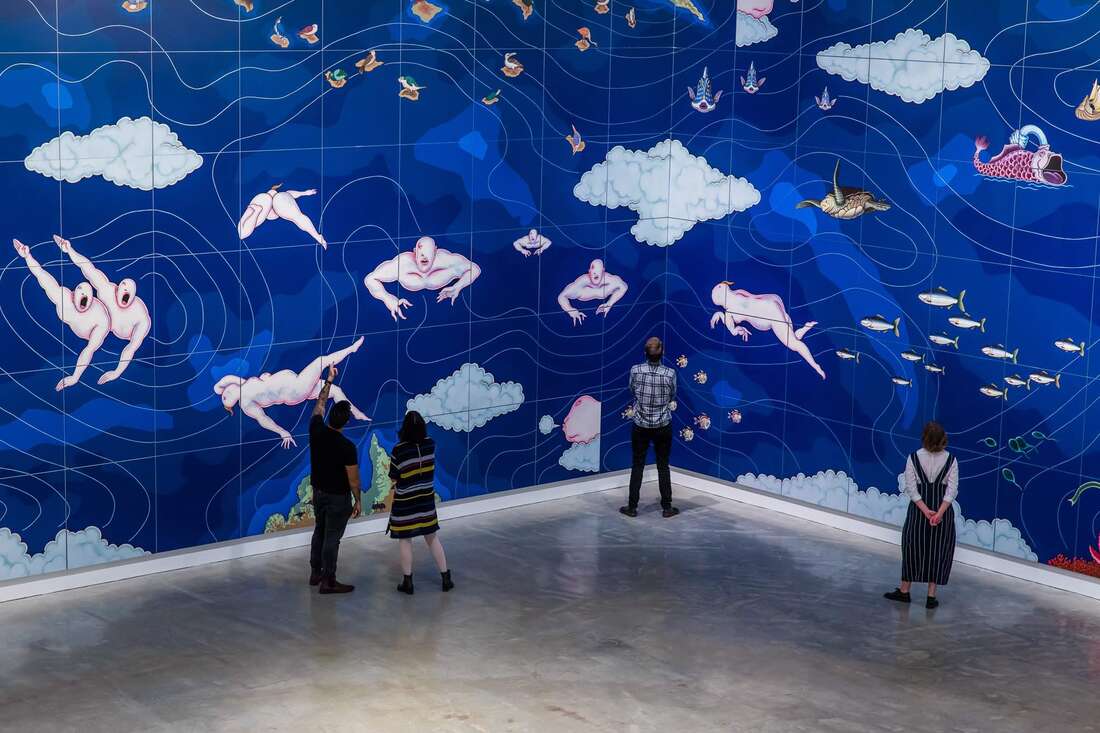
Guan Wei, Feng Shui, 2004, detail of installation, photograph Anna Kucera
The artist writes concerning his thinking about the piece, “[an] ancient and traditional Chinese concept based on the interrelationships between human beings, nature, the environment and the universe at large, and how these specifically relate to the spaces we inhabit. Ancient Chinese Taoists believed that good feng shui maintained the balance between humans and nature and, additionally, that to create a harmonious living space, the construction of any building should follow the natural order of the environment. As the condition of our environment grows more critical daily and we move headlong towards the depletion – or destruction – of our natural resources, such enlightened ancient wisdom seems to take on an even greater significance for our modern lives. The guiding premise is that good feng shui can bring much happiness to our lives and the theme of this work stems from this core notion of the equilibrium between human beings, nature and the environment.”
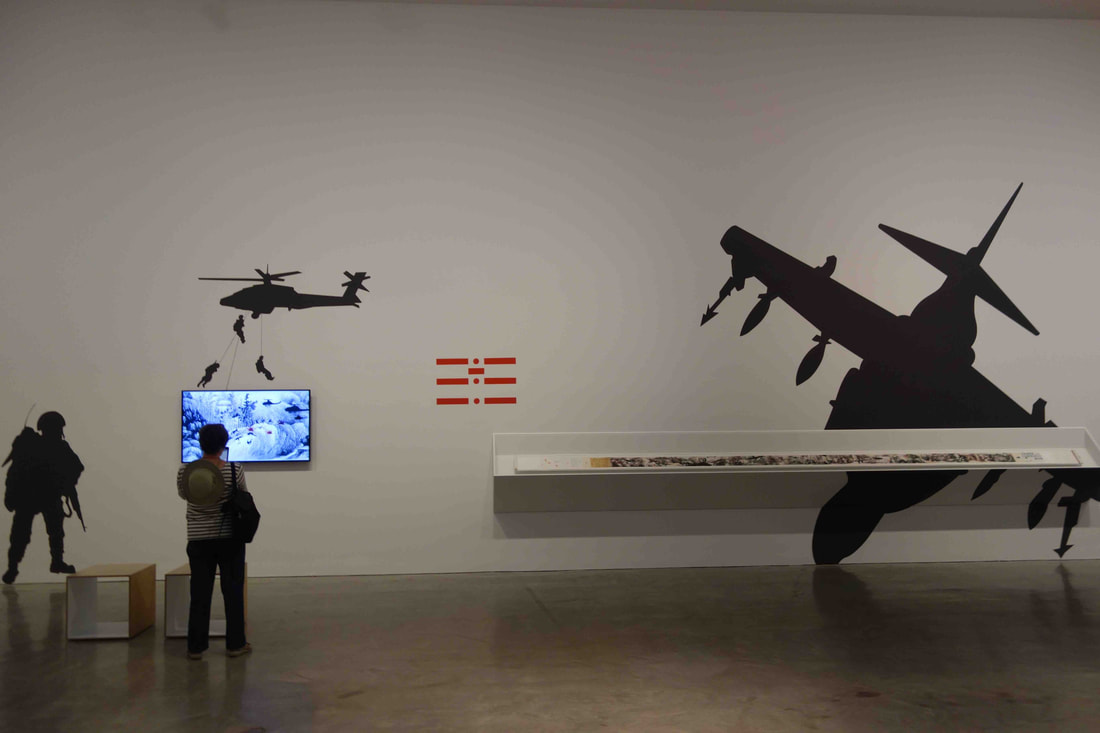
Guan Wei, Paper War, 2014-15, detail of installation, photograph S Grishin
The final piece at the exhibition is
Paper War (2014-15) and again conceptually is a multitiered work. In 2003 in New York, Guan Wei made a work where he overpainted a reproduction of a Qing Dynasty long landscape scroll with figures and military symbols. Now, through video animation, the figures have been brought to life and have become more menacing and contemporary. The artist notes, “We witness war through TV, film or computer, and it is now quite ‘appealing’, like playing a video game. Although seemingly unreal, that is reality.”
Guan Wei, as always, amuses and delights his audience in China and around the world.
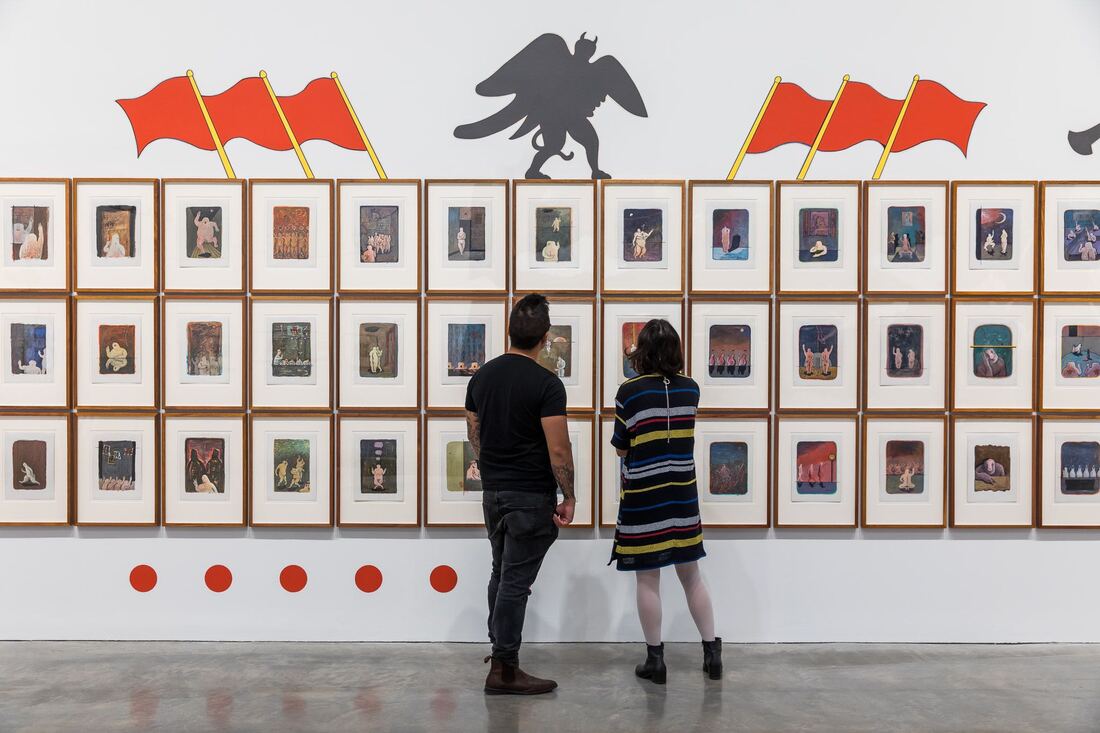
Guan Wei, Two-finger exercise, 1989, detail of installation, photograph Anna Kucera
Guan Wei: MCA Collection
Museum of Contemporary Art, 140 George St, The Rocks, Sydney
11 October 2019 – 9 February 2020 daily 10am – 5pm (late night opening Wednesday until 9pm) No admission charges
Link to Sasha’s original article
here.







